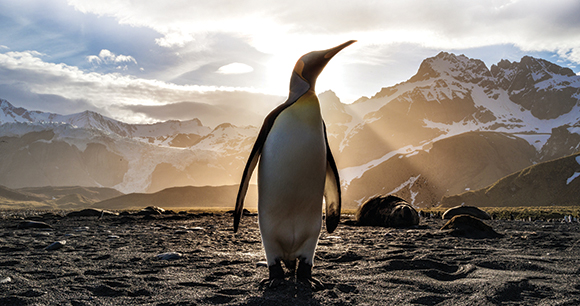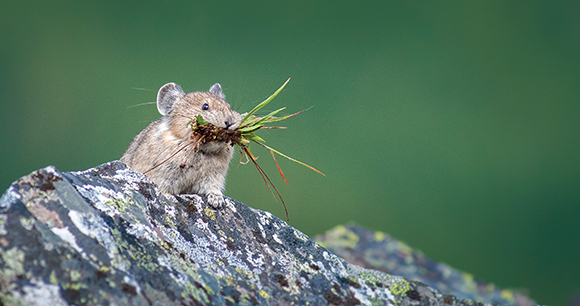In its August 2021 report, Climate Change 2021: The Physical Science Basis, the Intergovernmental Panel on Climate Change (IPCC) states, “It is unequivocal that human influence has warmed the atmosphere, ocean and land. Widespread and rapid changes in the atmosphere, ocean, cryosphere and biosphere have occurred.” Indeed, climate change is increasing the frequency and severity of drought, searing heat, wildfires, and flooding. Formerly “extreme” events, in fact, have become the new normal. Coupled with disappearing polar ice and dramatic shifts in ecosystem structure and function, they are having deadly and expanding impacts on wildlife, biodiversity, and humans. Across the globe, few species will be spared.

Dependent on sea ice for food and reproduction, polar bears have become the poster species for what we stand to lose. Receding Arctic ice also affects the reproduction, pup survival, and feeding ecology of other ice-dependent species such as seals and walruses. Entire Arctic marine ecosystems are transforming as warming water alters ecological processes. On land, musk ox and caribou are starving as climate change causes more rain, which freezes to create impenetrable ice layers, preventing access to vegetation during the winter. Indeed, according to a January 2018 study published in Scientific Reports, musk ox are getting smaller due to nutritional deficiencies linked to climate change. Warming temperatures have also allowed lungworms and other parasites to expand their range, to the detriment of the health of musk ox and other species.
In Antarctica, warming waters are shifting krill habitat. This is adversely impacting a number of species, including penguins. According to a 2018 study published in PLoS One, a projected 40 percent decline in krill biomass in the northern Scotia Sea will result, on average, in a 30 percent decline in penguin abundance. Climate change may also have contributed to an 83 percent decline in Adélie penguin breeding pairs since 1974 within the Palmer Long Term Ecological Research region along the western Antarctic peninsula. Similarly, in 2001, scientists documented a 50 percent decline in emperor penguins over 50 years in Adélie Land, Antarctica, with a projected decline of another 50 percent by 2100.
While climate change impacts are most dramatic near the poles, its effect spans the globe. In 2019–2020, massive wildfires in Australia killed nearly 3 billion animals, including nearly 2.5 billion reptiles, 180 million birds, 143 million mammals, and 51 million frogs. An estimated 50 percent of the corals on Australia’s Great Barrier Reef have died since 1995 as a consequence of heat stress, mass coral bleaching, and ocean acidification. According to the United Nations Environment Programme, a fifth of the world’s total reef areas—critical habitat for countless species—has been lost due to reef degradation, with another 15 percent under imminent threat over the next decade.
In July 2021, temperatures rose so high in the seas near Vancouver, Canada, that marine invertebrates were cooked alive; an estimated 1 billion small sea creatures perished in the Salish Sea. Inland, Canada’s vast boreal forests are dying as warming temperatures permit endemic and invasive pest species to weaken trees, making the forests more susceptible to catastrophic wildfires. Globally, boreal forests are an important carbon sink; their decline will exacerbate the impacts of climate change.
In the contiguous United States, the changing climate is affecting many species. For example, the piping plover is harmed by rising sea levels and storm surges. Sea turtle nesting habitat is being lost to rising seas, while higher sand temperatures alter population demographics, causing more females than males to be born. Atlantic puffins in the Gulf of Maine are starving as their primary prey move north in response to warming waters. American pika (below) are disappearing from their rocky talus habitat between the Sierra Nevada and Rocky Mountains as temperatures warm. Salmon habitat is being lost as stream and river temperatures increase. Moose are moving north to escape rising temperatures and booming parasite populations. And manatees are dying in response to cold weather events.

In Africa, droughts are altering ecosystems, diminishing food and water supplies, increasing the spread of disease, disrupting reproductive cycles, and increasing human-wildlife conflicts. A September 2020 study in Science attributed an 81 percent decline in fruit production in Gabon to the changing climate, resulting in an 11 percent decline in the condition of forest elephants. As climate change alters the range of the tsetse fly—which constrains cattle production—cattle grazing encroaches into lion-occupied habitat, creating more conflict between herders and lions.
In South America, climate change is exacerbating the myriad threats to the Amazon rainforest. A 2019 study published in Nature Climate Change found that the impacts of climate change may even surpass the impacts of deforestation by causing a 31–37 percent decline in tree species, which, when combined with deforestation, could result in a 58 percent reduction in tree species diversity. In addition, changing land use practices in response to climate-influenced drought are likely to affect the distribution of infectious diseases, to the detriment of wildlife and livestock.
These are just a few examples among many. Climate change is expanding the range of invasive species, contributing to the spread of wildlife diseases, increasing the risk of severe wildfires, acidifying vast areas of ocean habitat, reducing habitat quality, transforming ecosystem structure, disrupting the seasonal cycles of breeding birds and their food sources, and altering species distributions. Wild species that cannot adapt—or walk, fly, swim, or slither to suitable habitat—will perish.
In 2019, the Intergovernmental Science-Policy Platform for Biodiversity and Ecosystem Services called for transformational change to combat the global biodiversity crisis. It recently joined forces with the IPCC to call for the same to combat the interlinked threats of climate change and biodiversity loss. Indeed, the protection of biodiversity could be critical, because elephants, whales, and beavers, to name a few, mitigate the adverse impacts of climate change.
Unfortunately, images of charred kangaroo carcasses, starving polar bears, and bleached coral reefs have had little impact on governments thus far to meaningfully address the climate crisis. Perhaps the increasing toll of human lives and suffering tied to our changing climate will.
This is part one of a two-part series. In our next issue, we will examine initiatives the Biden administration is pursuing to address climate change.